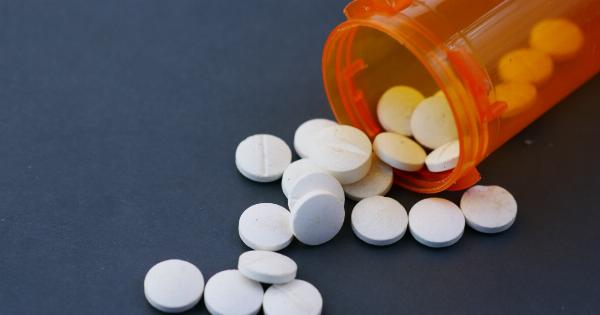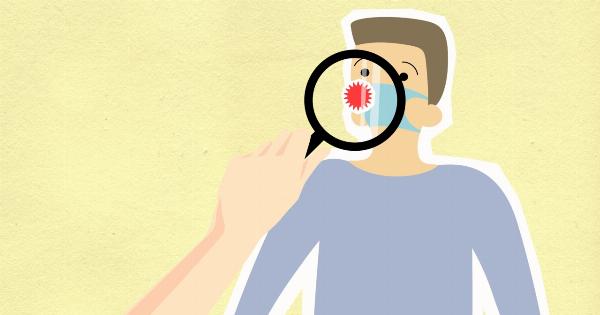Sterilization, also known as spaying (females) or neutering (males), is a common surgical procedure done on dogs and cats to prevent reproduction.
While the primary purpose of sterilization is to control pet overpopulation and prevent unwanted litters, it also has significant effects on the sexual drive and behavior of animals. In this article, we will explore the various effects of sterilization on the sexual drive of dogs and cats.
1. Decreased Sexual Drive
One of the most noticeable effects of sterilizing dogs and cats is a significant decrease in their sexual drive.
As these animals are no longer capable of reproducing, the hormones related to sexual behavior are greatly reduced, leading to a decreased interest in mating. This can make them less prone to roaming and seeking out potential mates, resulting in a calmer and less sexually frustrated pet.
2. Reduced Aggression
In addition to reducing sexual drive, sterilization can also contribute to a decrease in aggressive behavior in both male and female dogs and cats.
Unaltered animals often exhibit aggressive tendencies related to mating competition, such as marking territory, fighting with other animals, or displaying dominant behaviors. By removing their reproductive organs, the production of certain hormones associated with aggression is reduced, leading to a more docile and less confrontational temperament.
3. Minimized Roaming
Sexually intact dogs and cats often have a strong instinct to wander in search of a mate. This roaming behavior can be hazardous, as it increases the risk of accidents, getting lost, or encountering dangerous situations.
Sterilized animals are less likely to exhibit excessive roaming behavior as their desire to seek out mates diminishes. This can provide a sense of relief for both pet owners and the animals themselves, reducing the risk of various potential hazards.
4. Lower Risk of Certain Health Issues
Aside from behavioral changes, sterilization also offers several health benefits to dogs and cats.
Female pets that are spayed have a reduced risk of developing mammary gland tumors and eliminating the risk of developing uterine infections, such as pyometra. In male pets, neutering eliminates the risk of testicular cancer and reduces the incidence of prostate issues. By eliminating the risk of these ailments, sterilization helps to ensure a healthier and longer life for our beloved companions.
5. Prevention of Unwanted Litters
One of the primary reasons for sterilizing pets is to control pet overpopulation. By preventing unwanted litters, sterilization significantly reduces the number of homeless animals and the strain on animal shelters.
It also helps to prevent cases of pets being abandoned or euthanized due to the inability to find suitable homes for them. Sterilizing pets is an important step in responsible pet ownership and contributes to the welfare of the animal population as a whole.
6. Timing of Sterilization
It is crucial to consider the appropriate age to sterilize dogs and cats. While the commonly recommended age for sterilization is around six months, there has been some debate regarding the optimal timing.
Some studies suggest that early-age sterilization (around eight weeks) can have beneficial effects on behavior and health. However, it is important to consult with a veterinarian to determine the best timing for sterilizing your pet, as factors such as breed, size, and overall health should be taken into account.
7. Potential Weight Gain
A potential side effect of sterilization is weight gain. As the hormonal changes associated with sterilization can slow down metabolism, sterilized pets may have a tendency to gain weight more easily.
It is essential for pet owners to monitor their pet’s diet and provide regular exercise to prevent obesity. By maintaining a balanced diet and engaging in physical activities, the risk of weight gain can be minimized and the overall health and well-being of the pet can be improved.
8. Individual Variations
It’s important to note that the effects of sterilization on sexual drive can vary between individual animals.
While some pets may experience a significant decrease in sexual drive and behavior following sterilization, others may exhibit minimal changes. Factors such as the age of sterilization, pre-existing behavior, and overall temperament can influence the extent of behavioral changes observed in sterilized pets.
Understanding these individual variations can help pet owners set realistic expectations regarding the effects of sterilization on their furry companions.
9. Behavioral Counseling
In some cases, behavioral counseling may be beneficial for pets who experience significant changes in sexual drive or behavior after sterilization.
A professional animal behaviorist or trainer can provide guidance on how to manage any behavioral issues that may arise. Techniques such as positive reinforcement training and environmental enrichment can be employed to help pets adjust to the hormonal changes and maintain a fulfilling and happy life post-sterilization.
10. Conclusion
Sterilization has a profound impact on the sexual drive and behavior of dogs and cats. It results in a decreased sexual drive, minimizes roaming tendencies, reduces aggression, and prevents the risk of certain health issues.
By controlling pet overpopulation, sterilization also contributes to the welfare of animals as a whole. While individual variations exist, the overall benefits of sterilization outweigh the potential drawbacks.
It is important for pet owners to consult with a veterinarian to determine the optimal timing and other considerations for sterilizing their pets.






























